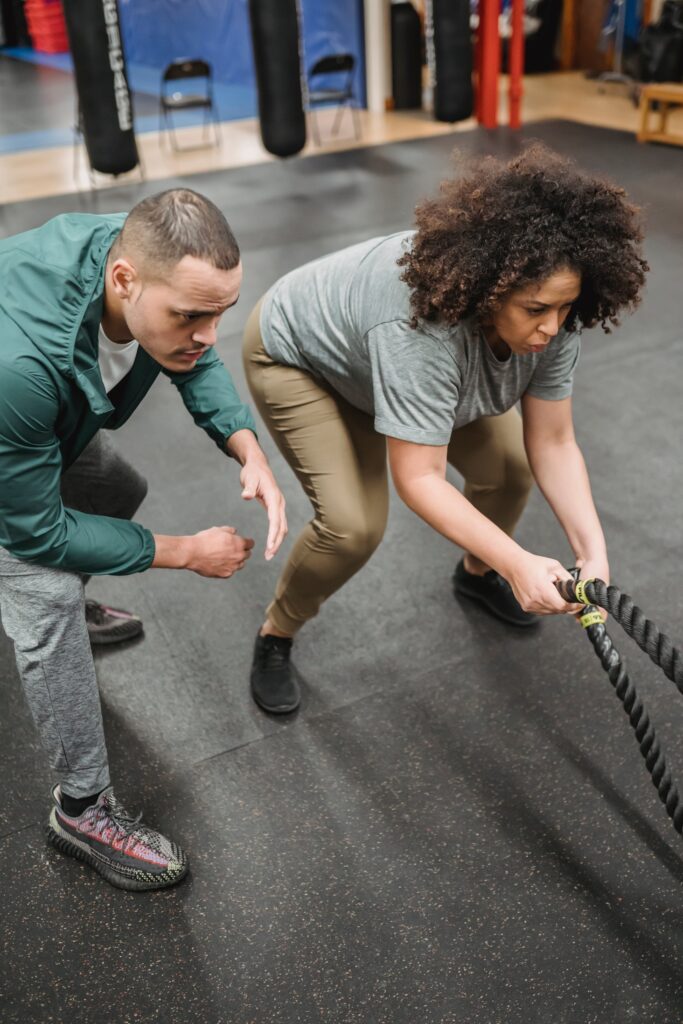The Most Popular Gym Equipment and How to Use Them Safely
Introduction:
Navigating the complex world of gym equipment is a critical component of any successful fitness journey. The modern fitness landscape is a sophisticated ecosystem of technological innovation and scientific precision, where understanding equipment goes far beyond simple mechanical interaction. Each machine, from cardiovascular equipment to strength training tools, represents a carefully engineered solution designed to optimize human physical performance.
Gym equipment serves multiple critical functions: targeting specific muscle groups, improving cardiovascular endurance, enhancing metabolic efficiency, and providing scientifically structured movement patterns that support comprehensive fitness objectives. The intricate design of these machines reflects advanced biomechanical research, ergonomic principles, and a deep understanding of human physiological adaptation mechanisms.

Cardiovascular Machine Dynamics:
Treadmills, ellipticals, and stationary bikes represent more than simple exercise equipment. These sophisticated machines offer scientifically designed cardiovascular training environments, allowing users to precisely control intensity, monitor performance metrics, and develop comprehensive endurance strategies while minimizing joint stress and maximizing metabolic engagement.
Strength Training Equipment Ecosystem:
Weight machines and free weights constitute a sophisticated strength development infrastructure. These meticulously engineered tools provide structured resistance mechanisms, enabling targeted muscle group activation, progressive overload principles, and biomechanically optimized movement patterns that support comprehensive muscular development and functional strength acquisition.
Functional Training and Movement Optimization:
Resistance bands, stability balls, and kettlebells represent a revolutionary approach to training equipment insights.. These versatile tools challenge traditional exercise paradigms by introducing dynamic, multi-dimensional movement patterns that engage core stabilization, improve proprioception, and create holistic body awareness beyond conventional machine-based training methodologies.
Advanced Safety and Technique Protocols:
Comprehensive equipment usage requires a deep understanding of biomechanical principles, proper postural alignment, and precise movement execution. Each machine demands a nuanced approach that integrates anatomical knowledge, controlled motion mechanics, and individualized adaptation strategies to prevent potential injuries and maximize physiological potential.
Personalized Equipment Selection Strategies:
Choosing appropriate gym equipment involves a sophisticated assessment of individual fitness levels, physiological characteristics, and specific performance objectives. Beginners require carefully curated equipment recommendations that facilitate gradual skill development, maintain motivation, and establish foundational movement competencies.
Specialized Training Stations and Advanced Techniques:
High-performance equipment like squat racks, leg press machines, and complex resistance stations represent advanced fitness technology. These sophisticated platforms demand precise technical knowledge, progressive loading strategies, and a comprehensive understanding of movement biomechanics to unlock their full potential.
Recovery and Mobility Enhancement Tools:
Foam rollers, specialized gym mats, and mobility-focused equipment represent critical components of a holistic fitness approach. These tools support comprehensive muscle recovery, improve flexibility, reduce injury risks, and create integrated physiological adaptation mechanisms that extend beyond traditional workout paradigms.

Conclusion:
Mastering gym equipment is a transformative journey that transcends traditional exercise paradigms. It represents an intricate integration of scientific knowledge, technological innovation, and personalized physical engagement. Modern fitness success demands more than random workout repetitions; it requires a strategic, informed approach to equipment utilization. Each piece of training equipment serves as a precision instrument designed to unlock human physical potential. By understanding biomechanical principles, safety protocols, and individualized movement strategies, fitness enthusiasts can transform routine exercises into comprehensive performance enhancement experiences.
The evolution of gym equipment reflects our advancing understanding of human physiology, demonstrating how technology and fitness science continuously intersect to create more effective, safer, and more targeted workout methodologies. Success lies not just in using equipment, but in comprehending its nuanced capabilities and applying them with intentional, knowledge-driven precision.
FAQS:
- How frequently should gym equipment undergo professional maintenance?
A: Recommend professional maintenance every 6-12 months with daily user-level cleaning and annual comprehensive technical inspection. - What equipment configurations suit different fitness levels?
A: Equipment selection varies by fitness level: beginners use guided machines, intermediates mix free weights, advanced users handle complex multi-joint equipment.
- What are the most effective injury prevention strategies?
A: Key strategies include proper warm-up, correct form, gradual weight progression, appropriate resistance levels, and professional guidance. - How do free weights compare to resistance machines?
A: Free weights offer more muscle stabilization and functional movement, while machines provide controlled, targeted muscle isolation. - Which equipment optimizes weight loss objectives?
A: Cardio machines, HIIT equipment, and a combination of cardiovascular and strength training tools are most effective for weight loss. - What are the most versatile gym equipment options?
A: Kettlebells, resistance bands, stability balls, adjustable dumbbells, and multi-functional cable machines offer maximum workout versatility. - Can comprehensive fitness be achieved with limited equipment?
A: Yes, through bodyweight exercises, resistance bands, and adaptive circuit training focusing on compound movements

Pingback: Group Classes vs. Personal Training: Which One Is Right for You? – Intenciti
Pingback: How to make most of your Gym Membership - Intenciti
Pingback: The Importance of Warm-Up andCool-Down Exercises - Intenciti
Pingback: - Intenciti